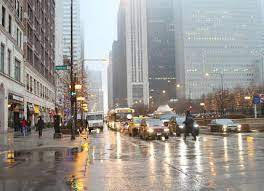Films and books have long held two neighboring places in my heart. As forms of storytelling, they have shaped and influenced me, each informing the other. I warn students of any class I teach that I will be referring, indiscriminately, to all forms of storytelling in our discussions—but what I mean by that is you will hear me talk about books, movies, television shows, Netflix series, songs, theater, etc.
Sometimes, writers are said to write in a “cinematic style” or with a “cinematic perspective,” and that has certainly been said about my writing from time to time. What is meant by this? It could mean the writing provides encompassing and vivid settings that are easy to visualize. Perhaps it means the form lends itself to the shape of film, with abrupt cuts from scene to scene or other techniques. Maybe it just means we can easily picture the book as a movie. For an excellent discussion of cinematic writing, look here.
I have a new novel, Starling, coming out in May. I started writing it a long time ago, and it has gone through many iterations. There are—what I suppose you can call—stylistic flourishes in it. I might as well be up front about this. In my experience, most people question or resist stylistic flourishes! Probably a result of our modern times, most of us feeling like we don’t have time for anything other than a direct line from A to B. But in Starling, aside from the main themes and story I wanted to explore, I also wanted it to say something about film, and about how these two forms of storytelling exist amicably for me, side by side.
Like me, the main character in the novel holds a lifetime of images in her mind. Gina has settled into a comfortable routine over the years, and feels her love of watching stories has expanded her horizons in many ways:
“Through television and movies, she had travelled all over. She knew Italy from Roman Holiday and Room with a View, California more from Chinatown and Irreconcilable Differences than her few visits to Deborah in Sacramento. She had digested entire chunks of history by watching television miniseries: twentieth century Australia in The Thorn Birds, the Civil War in North and South.”
Gina may have been influenced by her mother, a woman who named her
oldest daughter after the actress Deborah Kerr and who sought
refuge in a darkened living room after the kids had gone up to bed.
“Gina remembered a frequent sight: her mother, legs tucked underneath her on the tweed sofa, face lit by a flickering television screen. There was no getting her mother’s attention if she was watching something.”
And speaking of Deborah Kerr, there are certain images, certain scenes you will never be able to budge from your consciousness, once seen. Forward to 3:30 for the good part.
One of the inspirations for the novel was the idea of people creating their own realities. This has been a preoccupation of mine since college when I read Benedict Anderson’s Imagined Communities in a history class. A strange influence for fiction writing, I know, but the idea that nations could be/are formed by the collective imagining of their members—well, this has been something I’ve transferred to my fiction again and again, substituting "reality" for nations, and applying this idea to individual characters and families (even, especially, when “truth” is questionable). I never could have predicted how this basic premise would eventually affect my life, drastically and quite personally, but that’s another story altogether. In this novel, Gina has been living a life of her own making. And sometimes, the life we make can have illusionary aspects. We have so many films about alternate realities now and the ways technology has infiltrated our personal lives but when it came out in 1998, The Truman Show presented something novel—a person whose life ended up being something entirely unimagined. Gina catches glimpses of this movie on a long, international flight.
There are many visual references in the novel but in its first
version, the opening scene was a protracted, stylistic flourish: a sequence of downtown Chicago during a storm. I wanted to describe and set the
scene as a movie would. Here, the shot of commuters huddling underneath a bus
stop shelter, there, cars inching down a drenched street. Then we follow the
camera view to a single window in a high rise, where we focus on our hero,
standing at the rain-streaked glass. This flourish has been shortened over the
many drafts of the book, but the main intent is still there. The thing about
images and stories and characters and silky dresses that bounce and glide around
a palatial room—these things tend to attach themselves to other images and
stories and the impossibility of a boat piercing through a piece of the horizon—and
sometimes, something from our subconsciousness is unearthed unexpectedly. And this
is what happens to Gina as she stands at that window. She’s been humming the
tune from a Gap television commercial all day. It was a popular commercial at
the time, in the 1990s, and I wish I could find a version with better quality.
“The song is simple, mesmerizing, and it’s been in her head all day. The visuals: dancers in t-shirts and khaki pants converge and split into various groupings…The dancers are young and happy, perfect skin in various hues. And somehow this song, these gliding forms, are tied to a memory of Gina’s father, talking about Elvis at a dinner party.”
And so it goes, memory tied to memory, images linked to others.
